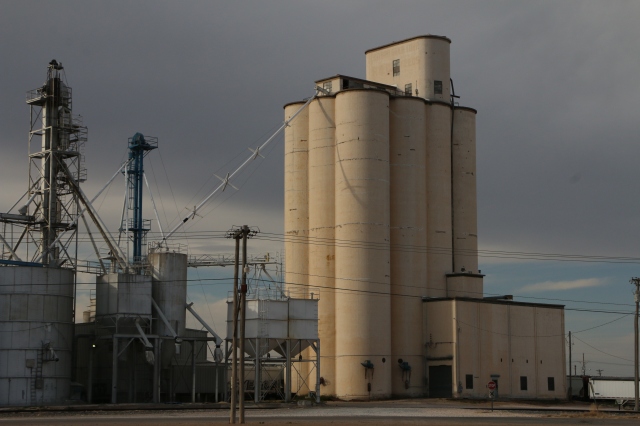 The single-leg elevator built at Hereford, Texas, by Tillotson Construction Company in 1951 had capacity for 300,000 bushels, according to company records. That worked out to 2,640 bushels per foot of height. The drawform walls of the silos, or tanks, rose 125 feet.
The single-leg elevator built at Hereford, Texas, by Tillotson Construction Company in 1951 had capacity for 300,000 bushels, according to company records. That worked out to 2,640 bushels per foot of height. The drawform walls of the silos, or tanks, rose 125 feet.
 Our calculation produces a total of 330,000 bushels at this rate. There were 2,104 cubic yards of reinforced concrete, 28 cubic yards of plain concrete for hoppers, and 121.47 tons of reinforcing steel including jack rods.
Our calculation produces a total of 330,000 bushels at this rate. There were 2,104 cubic yards of reinforced concrete, 28 cubic yards of plain concrete for hoppers, and 121.47 tons of reinforcing steel including jack rods.
The concrete would be mixed on-site, while the reinforcing steel and the lumber used for scaffolding were probably delivered by train.

The elevator’s main slab covered an area of 76.5 x 56 feet and was 24 inches thick. Below it, the pit depth was 26 feet–unusually deep in comparison to that of other elevators built that year in Greenwood and David City Nebraska and (12 and 17 feet, respectively) and Malta Bend, Missouri (9 feet 3 inches).
The headhouse, or cupola, was 17 feet wide, 36.75 feet long, and 27 feet high. So the structure crested at 152 feet.
That the pulley centers of the leg were 169.5 feet apart reflected the positioning of the lower boot pulley below ground level. That one measured 72 x 14 x 4 15/16 inches. The head pulley was 72 x 14 x 2 3/16. 
The head pulley turned at 42 rpm.
The six-ply Calumet belt was 14 inches wide. Cups were 12 x 6 inches and 8.5 inches deep. A 40-hp Howell head-drive turned the leg, and the cups bore a theoretical capacity of 79.2 bushels per hour, although actual capacity–80 percent of theoretical–was 63.4 bushels per hour.
The man-lift operated with a 1.5-hp electric motor.